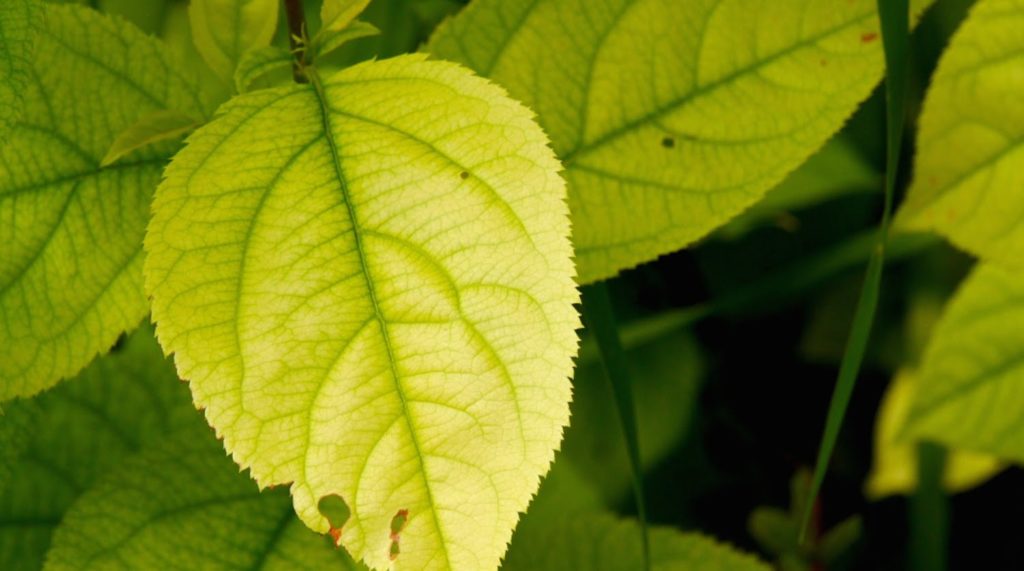Nutrient deficiency is a common affliction that affects deciduous and evergreen trees. Trees that become nutrient deficient often experience a drastic reduction in their functional and aesthetic qualities. In order to treat a nutrient deficiency, it must first be properly identified. The following examines how to effectively diagnose a nutrient deficiency.
Step One: Identification
The first step in determining if a nutrient deficiency exists is to identify the tree. Many trees have nutrient deficiencies that are commonly associated with them. For example, red maples in high pH soils can develop foliar chlorosis as a result of a manganese (Mn) deficiency. As the soil pH increases, the availability of manganese in the soil decreases. Because manganese plays a vital role in carbohydrate production, manganese deficiencies can stifle tree development, often resulting in foliar dieback. Pin oak trees that grow in alkaline soils are another example. The alkalinity of the soil prevents iron from being absorbed into the soil in sufficient quantities. This often results in pin oak trees developing iron chlorosis.
Step Two: Take Soil Samples
After identifying the tree, take a number of soil samples from around the affected site. Extract at least ten samples of soil at varying levels of rooting. First, take a few samples at a depth of four inches. Next take several samples at depths of twelve inches, eighteen inches, and twenty four inches. Take the remaining samples from soil located a few feet from the trunk, as well as some from under the drip line, and some from twice the drip line distance. Once all of the samples have collected, proceed to mix them together in a plastic bucket. Make sure to remove any rocks or roots from the soil. Finally, submit the sample to a reputable soil-testing laboratory for assessment.
Step Three: Check for Visual Symptoms
Experienced arborists may be able to detect symptoms of a nutrient deficiency by inspecting a tree’s leaves, needles, stems, and flowers. Affected trees will exhibit visual symptoms of the deficiency. These symptoms become more apparent as the deficiency increases.
Additional Notes:
Always follow the aforementioned steps to determine if a tree has a nutrient deficiency. Many symptoms related to nutrient deficiencies are similar to those caused by insects, diseases, natural needle or leaf drop, leaf scorch, winter injury, and injuries resulting from construction work, lawn maintenance, and herbicide applications.
Recommended Nutrient Amounts:
The ideal nutrient quantity for trees is relative to each species. The following is a general range to consider for most trees:
Desirable pH Range – 5 to 7 *
(N) Nitrate Nitrogen – 5 to 20 ppm *
(P) Phosphorous – 25 to 50 ppm *
(K) Potassium – 100 to 150 ppm *
(Mg) Magnesium – 200 to 400 ppm *
(Ca) Calcium – 300 to 800 ppm *
(S) Sulfur – 10 to 20 ppm *
(Zn) Zinc – 2 to 4 ppm *
(Fe) Iron – 50 to 150 ppm *
(Cu) Copper – 3 to 8 ppm *
(B) Boron – 0.5 to 1.0 ppm *
(Mn) Manganese – 30 to 200 ppm **
PPM = Parts Per Million
* Measurements Adapted from Pierce and Whitcomb, NAA Conference, 2015
** Manganese Measurement Adapted from Cornell University
Additional Resources:
http://nmsp.cals.cornell.edu/publications/factsheets/factsheet49.pdf
http://oregonstate.edu/dept/nursery-weeds/feature_articles/maple_chlorosis/maple_chlorosis.htm
Photo is provided courtesy of the University of Wyoming.


